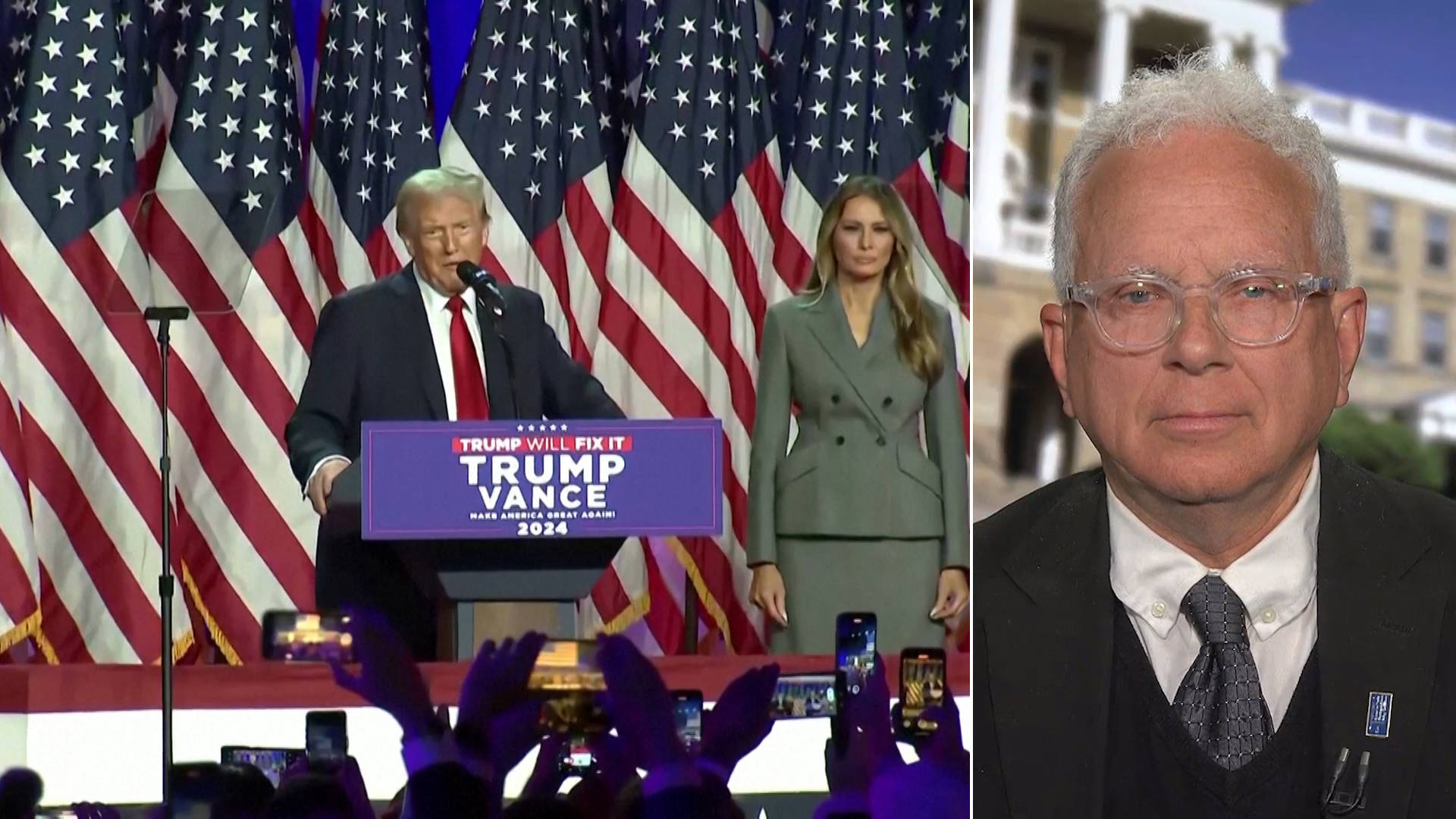This is a rush transcript. Copy may not be in its final form.
AMY GOODMAN: Ralph Nader, we’re also joined a Madison, Wisconsin, by John Nichols, The Nation‘s national affairs correspondent, author of more than a dozen books, including his latest, co-written with Vermont Senator Bernie Sanders, who just won reelection last night. The book is called _It’s OK to Be Angry About Capitalism_.
You’ve just listened to Ralph Nader talking about the problems with the Democratic position that was represented by Kamala Harris. If you can talk about how this played out in the Senate races? Because you’re in Wisconsin, which Trump won, but it looks like Tammy Baldwin has eked out a victory to retain her Senate seat. And then, in Ohio, Bernie Moreno, the, what, luxury car dealer, cryptocurrency millionaire, beat out Sherrod Brown, who opposed the Iraq War, opposed USA PATRIOT Act, an early champion of marriage equality and labor activist. John Nichols, take us through these Senate races and then what it means, the positions that Kamala Harris took — in a sense, not exactly shunning Bernie Sanders, but, as Ralph said, not campaigning with him.
JOHN NICHOLS: I think Ralph Nader’s points are very accurate. And in fact, I was actually taking notes as I was listening here. I would also say one other thing. You know, Ralph was talking about this throughout the campaign. And inspired by him, I wrote a number of articles on getting the issue of trade into this campaign at the presidential level. And it just didn’t happen. And there’s a host of other issues that didn’t, as well. And that, you can see writ large in the Senate and the House races. You’re not going to get a pure read one way or the other, but you can get real indications.
As Ralph Nader said, Bernie Sanders won by a landslide in Vermont, and he did that while actually spending a good deal of his time out on the campaign trail in other states, raising so many of the points that Ralph Nader just raised and also a host of others on these issues.
Tammy Baldwin won in Wisconsin, and I think that’s a race that really is going to be worthy of dissection, because Tammy Baldwin was one of the few candidates running for the Senate on the Democratic side that consistently ran ads that featured workers and union members, multiracial, multiethnic, talking about their challenges — pensions being taken away, bad trade policies, all of these things that we’re discussing here today. And so, though she won very, very narrowly, Tammy Baldwin’s victory is actually a real example of what you can do, because she ran — and we’ll get the exact figures, but it looks like she ran about 60,000 votes ahead of the top of the ticket in Wisconsin. That was obviously deciding.
Let me give you a few more details on where we’re at. One of the things that Ralph Nader just said that’s really important is that Congress is essential in all of these equations. We have to look at the Congress as a potential — not a certain, but a potential — place of opposition and an actual ability to stop some of the things that Donald Trump would want to do as president.
In the Senate races right now, it is absolutely clear the Republicans have won the Senate. They’re going to have a majority of at least 52-48, and I fear that that will probably expand a little bit. There are still technically six uncalled races. I think about four of them could go to the Democrats, two of them a little shakier. That majority there in the Senate is a big deal, because if it’s a 52-48, you still have some ability to move a couple of the Republican senators who were not supportive of Trump over into a coalition to at least stop some things. If the majority expands for the Republicans, that’s going to be a lot harder. But one of the things that we have to focus on right away is organizing in the states where there are Republican senators who could be moved or who might be moved on particular issues. That actually happened during Trump’s first term on some education issues, where activists, teachers’ union activists, in places like Alaska got Lisa Murkowski to move on particular issues, very vital vote.
Now let’s flip over to the House of Representatives, because the House of Representatives is, if it has a Democratic majority — and that is not assured, but if it gets a Democratic majority, it will become the base of opposition to Trump’s presidency. There should not be a, “Oh, you know, let’s see if we can find places to work together.” There should be a clear signal that, look, this House of Representatives is going to do everything in its power to stop bad initiatives. They have a lot of budget power. They have a lot of power on approving all sorts of bills on all sorts of issues. They have to have a united caucus. What’s critical in the House is the number of seats that are still up for grabs. I looked just before we came on air. There are 54 seats up for grabs. Most of them are on the West Coast, in California, Washington and Oregon, very Democratic states. But there are also some out in the Midwest and some — a number even on the East Coast. Once we get a read on where the House is, I think that the likelihood is that it will not be a large Democratic majority, if the Democrats win it. And again, I emphasize, they may not win it. But if they do win it, it won’t be a large majority. But if it is — you know, if it’s even three or four seats, that’s enough space, if Speaker Hakeem Jeffries and other people recognize their critical role as a check and balance on the administration.
AMY GOODMAN: If, in fact, the House —
JOHN NICHOLS: The fact of the matter is, just to —
AMY GOODMAN: — goes Democrat. But, John —
JOHN NICHOLS: Yeah.
AMY GOODMAN: — we’re going to have time to also talk about this in the second hour.











Post comments (0)